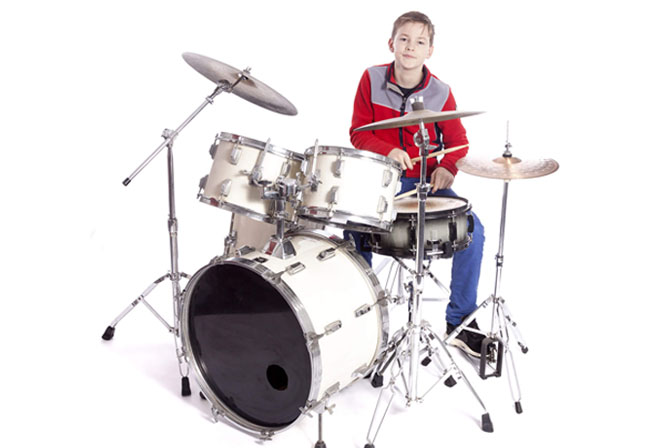Let’s face it – everyone likes to play drums. Even some of the all-time greatest guitarists or bassists wanted to play drums at first but ended up with another instrument because they didn’t have enough room in their homes or were too poor at the time to afford them. Either way, these days people usually have more room for drums and better settings for drum sets in their living spaces. Furthermore, we can now get solid drums for an affordable price and play them in the comfort of our home.
However, this doesn’t stop other issues and dilemmas we might have about the instrument. This is not only about the different kinds of brands, but also different configurations and setups of drum kits. And we gotta say – it is a bit of a complex instrument with many components and different issues you need to think about, even as a professional player. In this brief guide, we will be discussing an issue that some of the drum-lovers and beginners might stumble upon in their playing career – is it better to buy a 4-piece or 5-piece drum kit? So let’s begin.
The basic setup
First off, we need to explain what the main components are with every drum set. This is how you’ll understand the differences between a 4-piece and a 5-piece set.
We have two basic components, a kick drum and a snare drum which together give foundations of virtually every beat in rock, metal, jazz, pop, or any other musical style. Even electronic music will have its own “versions” of kick and snare drums.
Then up next, we have toms, also known as tom-tom drums. Each of the tom-toms will have its size and will reproduce a sound of different pitch. In modern music, these are used to offer some kind of a “movement” or a “transition” between two parts. You have rack-mounted toms, that are attached to the stand on the kick drum, and you have floor toms that stand on their own “legs” on the floor. These main components make a one drum set and define whether it’s a 4- or a 5-piece kit. So we’re going to get a little bit into details, main distinctions, and different formations of drum sets.
Cymbals are often confusing for the beginners, as they do not count into the main components of a drum kit and are quite often bought separately. Here, we’re focusing just on the essential drum components.

Differences between 4-piece and 5-piece drum set
To clear things out, both the 4-piece and a 5-piece feature a snare drum and a kick drum. The difference here is only by the number of toms. This means that we can either have two or three toms.
A four-piece drum set has one rack-mounted tom and a larger floor tom. For instance, you can have a 12-inch rack tom and a 14-inch floor tom. Some professional players are okay with a 4-piece drum set although it’s smaller and somewhat less versatile. It allows easier placement for a ride cymbal and it takes a bit less room both for in rehearsals and on the stage.
In addition, it has one less component to transport, which comes as a great advantage in some cases. Many famous drummers have been able to provide solid grooves on a 4-piece. Depending on your style of playing, it can be more than enough, especially if you’re in your beginner stages of playing. However, even some pros prefer using these setups, but we’ll get to that.
A five-piece drum set has three tom-toms on it. Now, there are two different configurations in this case. One of them, which you’ll see on most of the commercially sold drum sets, has two rack-mounted toms and a floor tom standing on its own legs. The other configuration features only one rack tom and a pair of floor toms. This second configuration is usually for larger toms that require more room and which usually don’t fit the rack stand on the kick drum. In addition, you’ll also have more room for ride placement.
What should I choose?
Obviously, a 5-piece drum set will give more components to play with. Some may find this to be necessary, especially if we’re talking about genres like heavy metal where you usually have longer drum fills. On the other hand, a 4-piece set has been used by countless jazz players over the years. And these guys had no trouble implementing it in their music.
What’s the perfect thing for you is a combination of your playing style and practicality. A 5-piece set is a standard and a lot of rock songs were recorded with this set in mind. But you could also be a touring musician who needs more space. Then, it might be a good idea to lose one of the toms. We also suggest that you diversify your skills and get used to a limited number of drum components. You’ll never know when you’ll need this skill.
Ultimately, any drum kit is customizable and you can have any setup that you want to. These two we described above are just the most often types we see in modern music. It’s not rare to find very complex and large drum kits, featuring numerous different components.
Also, some drummers prefer to use a 2-piece drum set with only a kick drum and a snare. Aside from solid grooves, they even manage to do different fills and transitions on these extremely simplified drum sets.
Our recommendation is to start with a 5-piece. Then, get familiar with how all the basic components work, and finally practice by limiting yourself to smaller drum kits. Also, drumming lessons help!